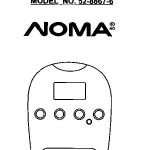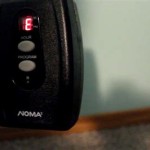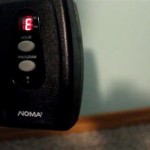Can You Paint a Glass Outdoor Table? A Comprehensive Guide
Painting a glass outdoor table is a project that can revitalize its appearance and provide a custom look. Glass, however, presents unique challenges compared to other surfaces. The non-porous nature of glass makes it difficult for most paints to adhere properly, potentially leading to peeling, scratching, or chipping over time, especially when exposed to outdoor elements.
The feasibility of painting a glass outdoor table depends on several factors, including the type of paint used, the preparation of the glass surface, the application technique, and the intended use of the table. A successful outcome necessitates careful consideration of these aspects to ensure a durable and aesthetically pleasing finish.
Understanding the Challenges of Painting Glass
Glass's inherent characteristics pose significant hurdles for paint adhesion. Unlike porous materials like wood or fabric, glass lacks natural crevices or textures that allow paint to grip onto the surface. This smoothness reduces the mechanical bond typically formed between paint and the substrate. Furthermore, glass is susceptible to condensation due to temperature fluctuations, which can create a barrier between the paint and the glass, further hindering adhesion. The expansion and contraction of glass in response to temperature changes can also stress the paint film, causing it to crack or peel over time, especially when combined with outdoor conditions.
The selection of appropriate paint is paramount in overcoming these challenges. Standard acrylic paints, often used on other surfaces, generally lack the bonding agents necessary to adhere effectively to glass. They may initially appear to adhere, but exposure to moisture, UV rays, and temperature variations will ultimately lead to failure. Specialized paints formulated for glass, containing additives that promote adhesion and flexibility, are essential for achieving a long-lasting finish.
Proper surface preparation is equally crucial. Even the best glass-specific paint will struggle to adhere to a dirty or oily surface. Thorough cleaning and degreasing of the glass are necessary to remove any contaminants that could interfere with paint adhesion. This process typically involves using a strong detergent, followed by wiping the glass with isopropyl alcohol to remove any remaining residue.
Selecting the Right Paint and Materials
The choice of paint is arguably the most important factor in determining the success of painting a glass outdoor table. Several options are available, each with its own advantages and disadvantages. Specific paints designed for glass surfaces are generally the most reliable choice. These paints contain specialized binders and additives that promote adhesion and provide a durable, weather-resistant finish.
Automotive paints, particularly those formulated for glass surfaces, can also be considered. These paints are designed to withstand harsh environmental conditions and provide a durable, scratch-resistant finish. However, they may require specialized application techniques and equipment, such as a spray gun, and may also involve the use of a primer specifically designed for automotive glass.
Epoxy paints offer excellent adhesion, hardness, and chemical resistance, making them a viable option for painting glass. However, epoxy paints can be more complex to apply, requiring the mixing of two or more components and careful attention to curing times. They may also be less flexible than other paint types, which could lead to cracking or chipping in response to temperature fluctuations. The user should also ensure proper ventilation when working with epoxy paints.
In addition to the paint itself, several other materials are essential for a successful painting project. These include:
- Cleaner/Degreaser: A strong detergent or specialized glass cleaner to remove dirt, oil, and other contaminants from the glass surface.
- Isopropyl Alcohol: Used to remove any remaining residue after cleaning.
- Tack Cloth: To remove any lingering dust particles before painting.
- Painter's Tape: For masking off areas that should not be painted.
- Primer (Optional): Some glass paints recommend the use of a primer to improve adhesion, even for paints that indicate otherwise.
- Paintbrushes/Rollers/Spray Gun: The choice depends on the type of paint used and the desired finish.
- Protective Gear: Gloves, safety glasses, and a respirator (if using spray paint or epoxy paints).
- Drop Cloth: To protect the surrounding area from paint splatters.
Step-by-Step Guide to Painting a Glass Outdoor Table
Painting a glass outdoor table requires meticulous preparation and careful execution. Following these steps will increase the likelihood of achieving a durable and aesthetically pleasing finish.
- Surface Preparation: Begin by thoroughly cleaning the glass surface with a strong detergent and water. Remove any dirt, grease, or grime that could interfere with paint adhesion. Rinse the glass thoroughly and allow it to dry completely. Next, wipe the glass with isopropyl alcohol to remove any remaining residue. Use a tack cloth to remove any dust or lint particles.
- Masking: Use painter's tape to mask off any areas of the table that should not be painted, such as the frame or legs. Ensure that the tape is securely adhered to the glass to prevent paint from seeping underneath.
- Priming (Optional): If the chosen paint recommends a primer, apply a thin, even coat of primer to the glass surface using a brush, roller, or spray gun. Allow the primer to dry completely according to the manufacturer's instructions. The primer will create a better surface for the paint to adhere to.
- Painting: Apply the chosen paint to the glass surface using a brush, roller, or spray gun. Apply thin, even coats of paint, allowing each coat to dry completely before applying the next. Avoid applying thick coats of paint, as this can lead to runs, drips, and uneven drying. Follow the manufacturer's instructions regarding drying times and the number of coats to apply.
- Curing: Allow the paint to cure completely according to the manufacturer's instructions. This may take several days or even weeks, depending on the type of paint used. Avoid placing any objects on the table until the paint is fully cured.
- Sealing (Optional): Consider applying a clear sealant to protect the painted surface from scratches, UV rays, and moisture. Choose a sealant that is compatible with the paint used and follow the manufacturer's instructions for application.
- Clean up: After the curing or sealing process remove the masking tape carefully, pulling away from the painted surface to avoid chipping.
If using spray paint, ensure proper ventilation and wear a respirator to avoid inhaling harmful fumes. When using brushes or rollers, choose high-quality tools that will not shed bristles or leave behind unwanted textures. The number of coats required will depend on the opacity of the paint and the desired level of coverage. Multiple thin coats are preferable to a single thick coat.
After completing the painting project, allow the paint to cure fully before placing the table outdoors. Curing allows the paint to harden and develop its maximum durability and adhesion. Avoid exposing the table to harsh weather conditions or heavy use during the curing period.
Maintaining the painted glass table involves regular cleaning with a mild detergent and water. Avoid using abrasive cleaners or scrub brushes, as these can scratch or damage the painted surface. Promptly wipe up any spills or stains to prevent them from penetrating the paint film.
The longevity of the painted finish will depend on several factors, including the quality of the paint, the thoroughness of the surface preparation, the application technique, and the environmental conditions to which the table is exposed. Periodic touch-ups may be necessary to repair any chips or scratches that may occur over time.

How To Make A Perfect Glass Patio Table Makeover

Spray Paint Underneath A Glass Top Table Patio Furniture Makeover Kitchen Tables

Diy Boho Patio Side Table Makeover Little Vintage Cottage

Reader Project Glass Top Table Makeover With Plastikote Spray Paint Ideas

How To Patio Table Makeover

How To Make A Perfect Glass Patio Table Makeover

How To Make A Perfect Glass Patio Table Makeover

How To Make A Perfect Glass Patio Table Makeover

Frosted Glass Table Top Windows More Easy Diy Project Porch Light Reading

How To Paint Outdoor Furniture Thrift Diving Blog
Related Posts







